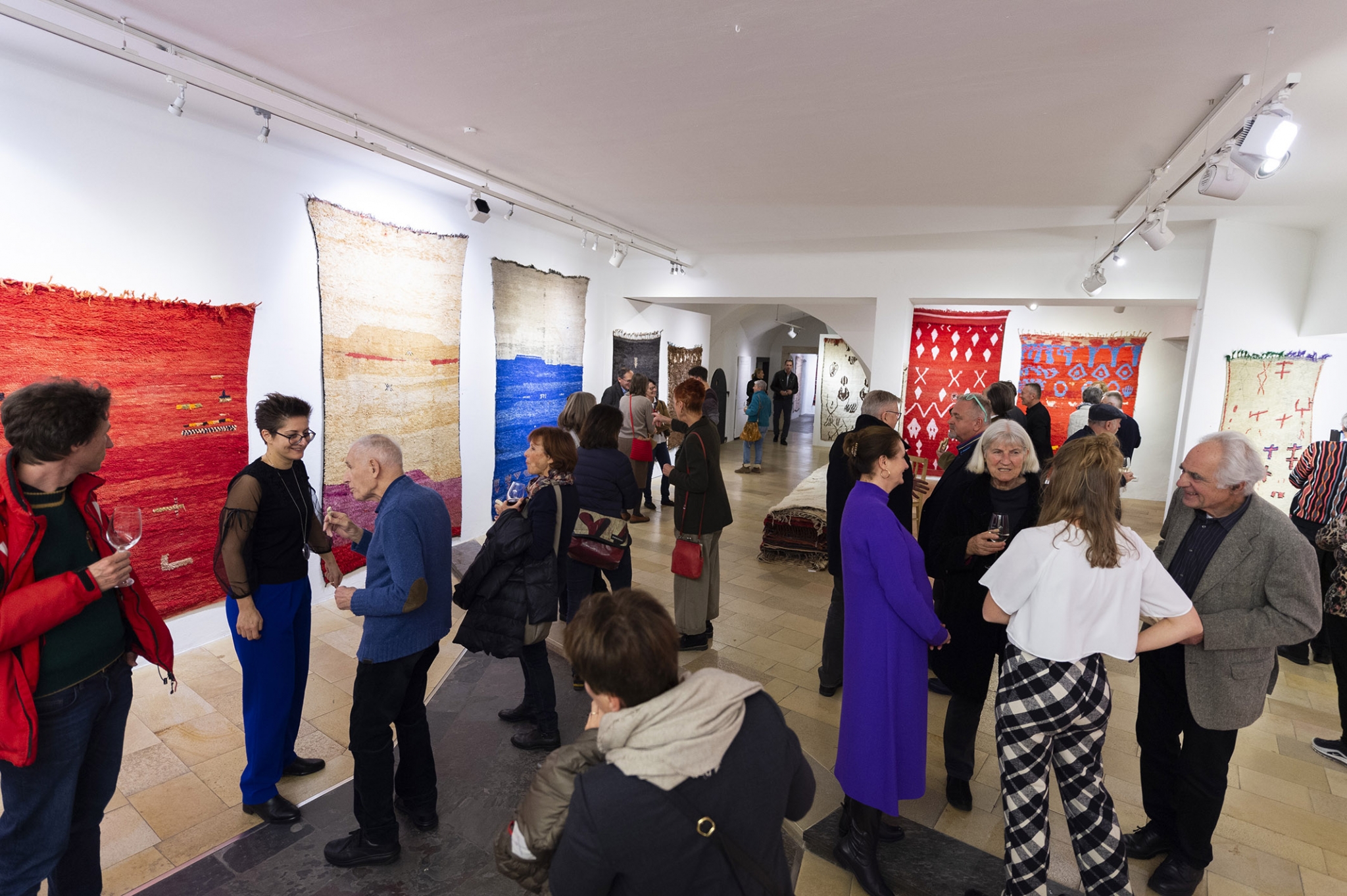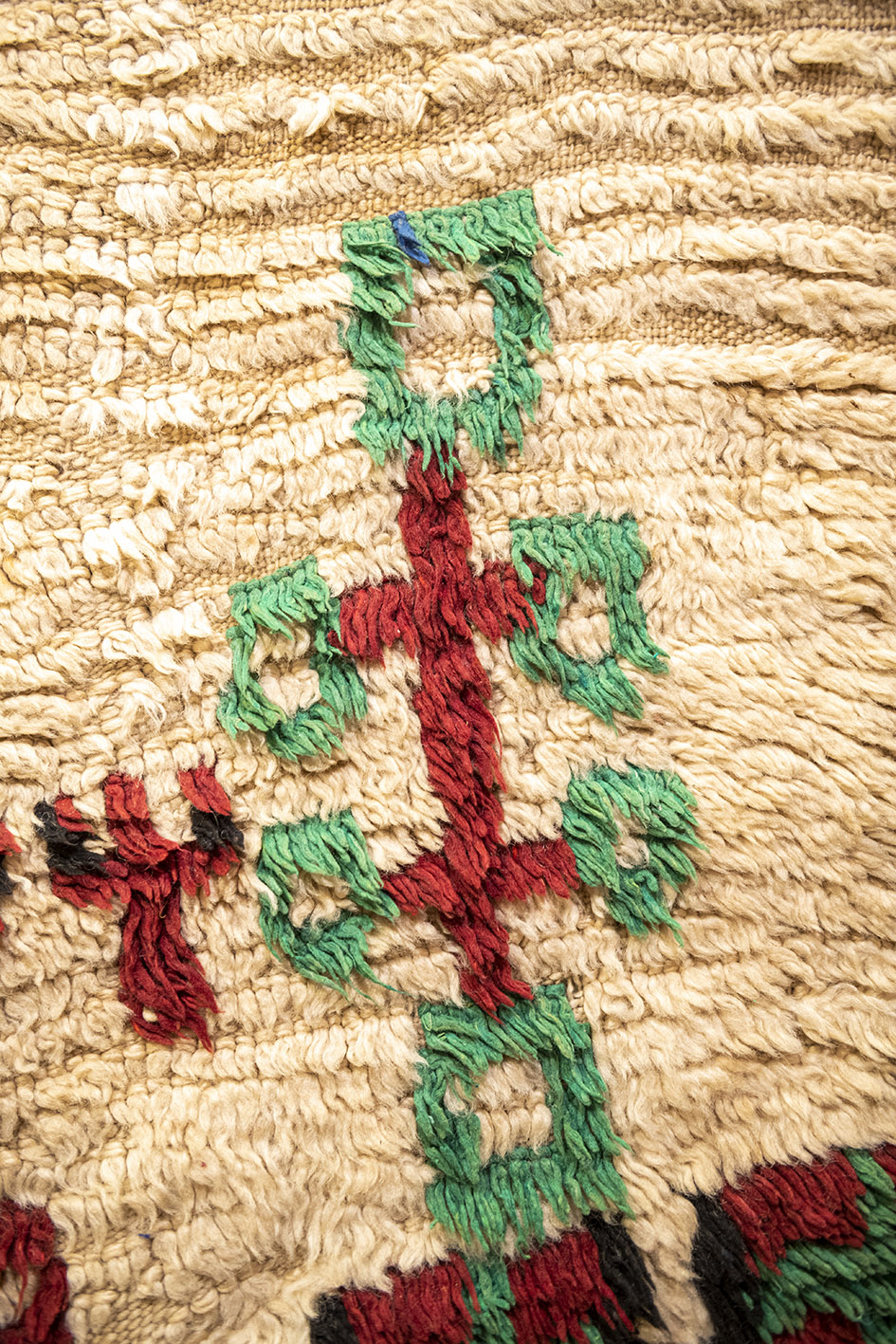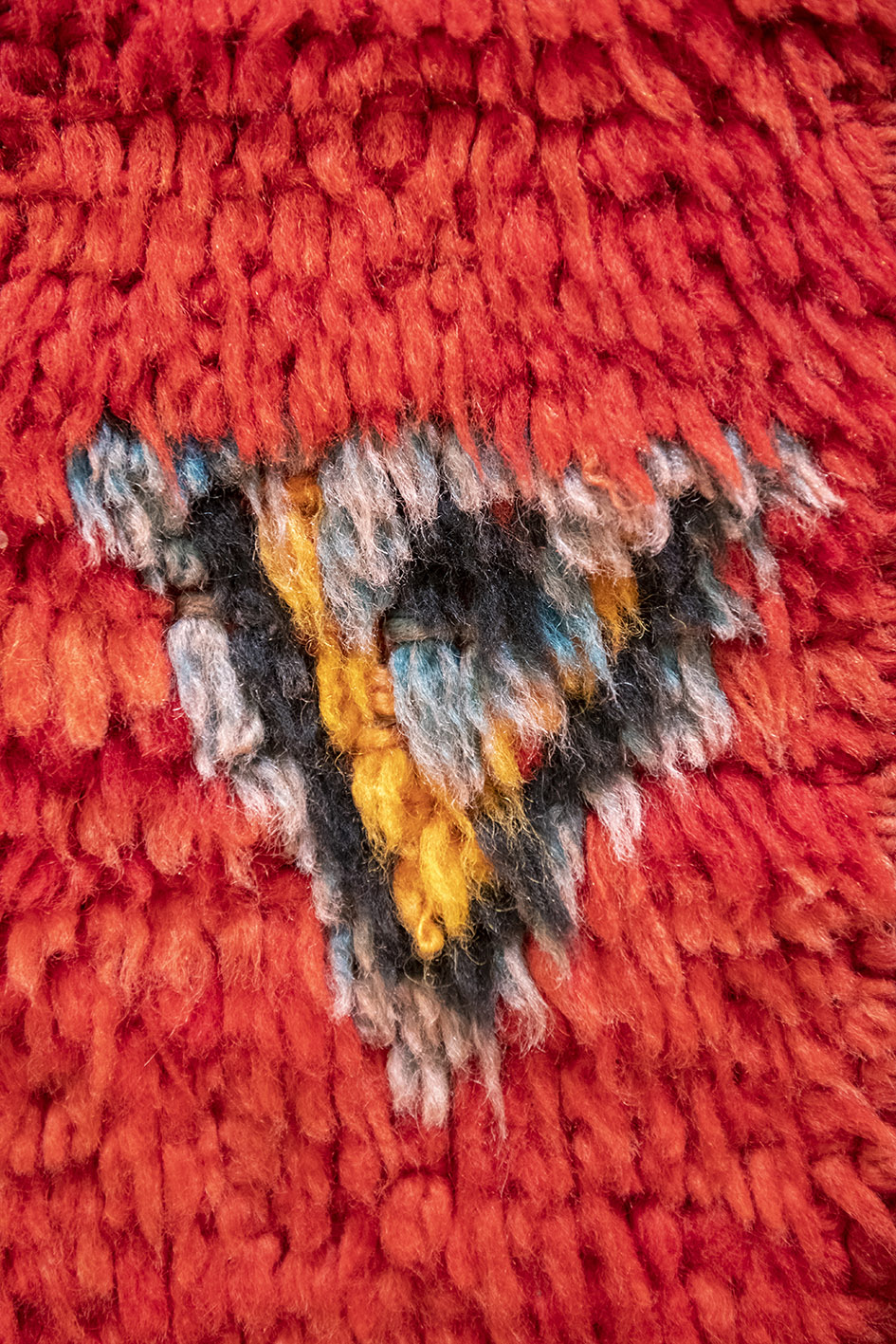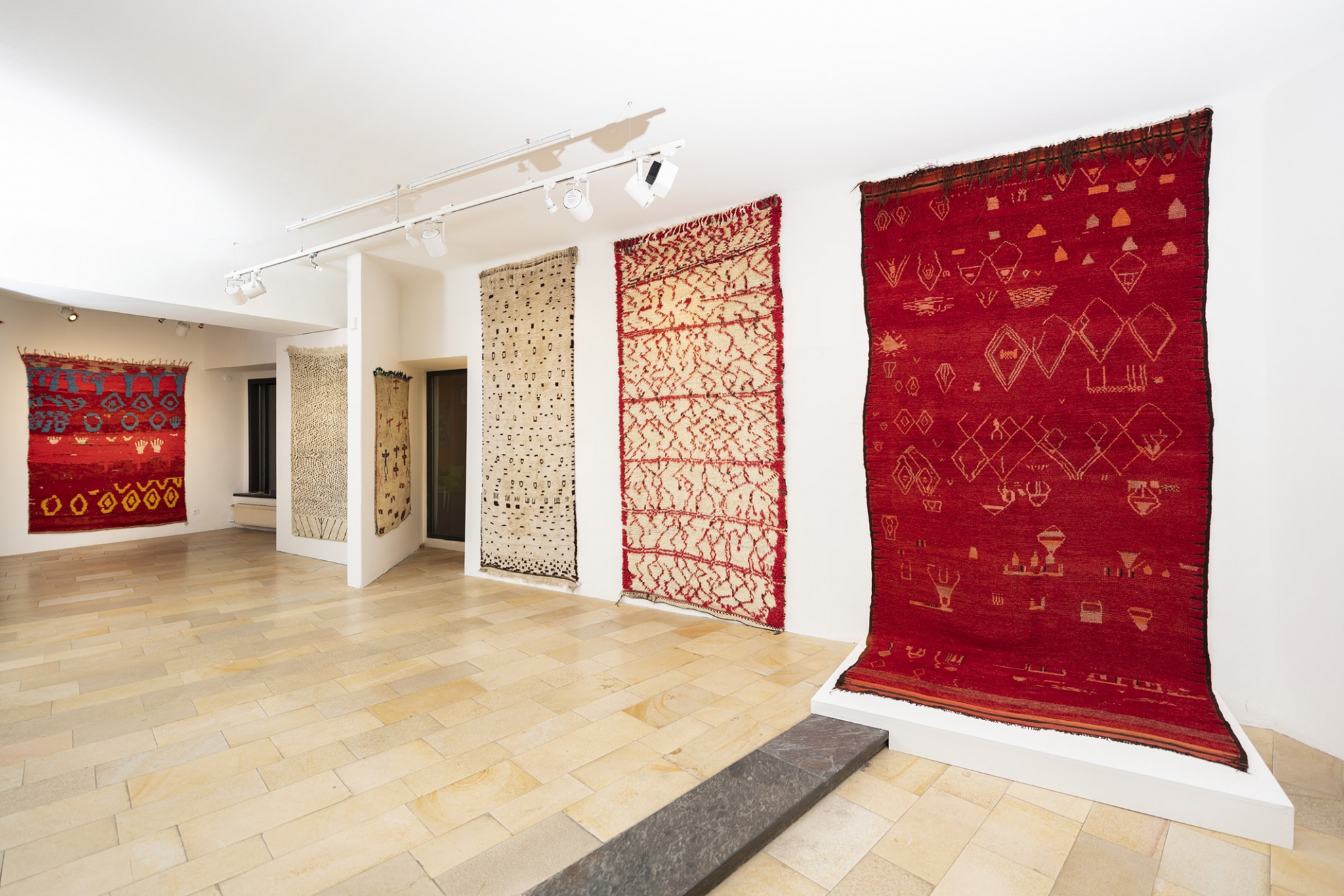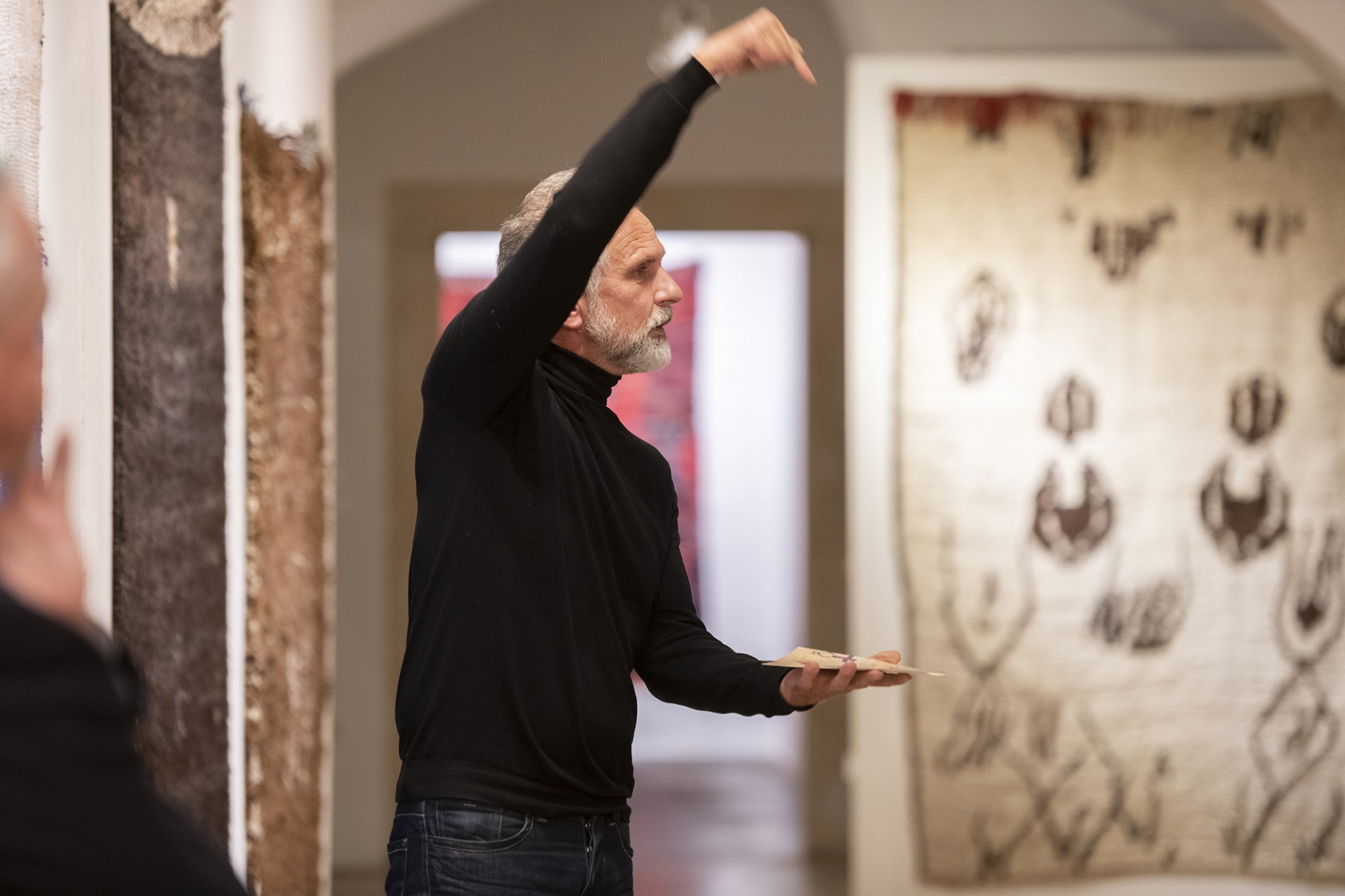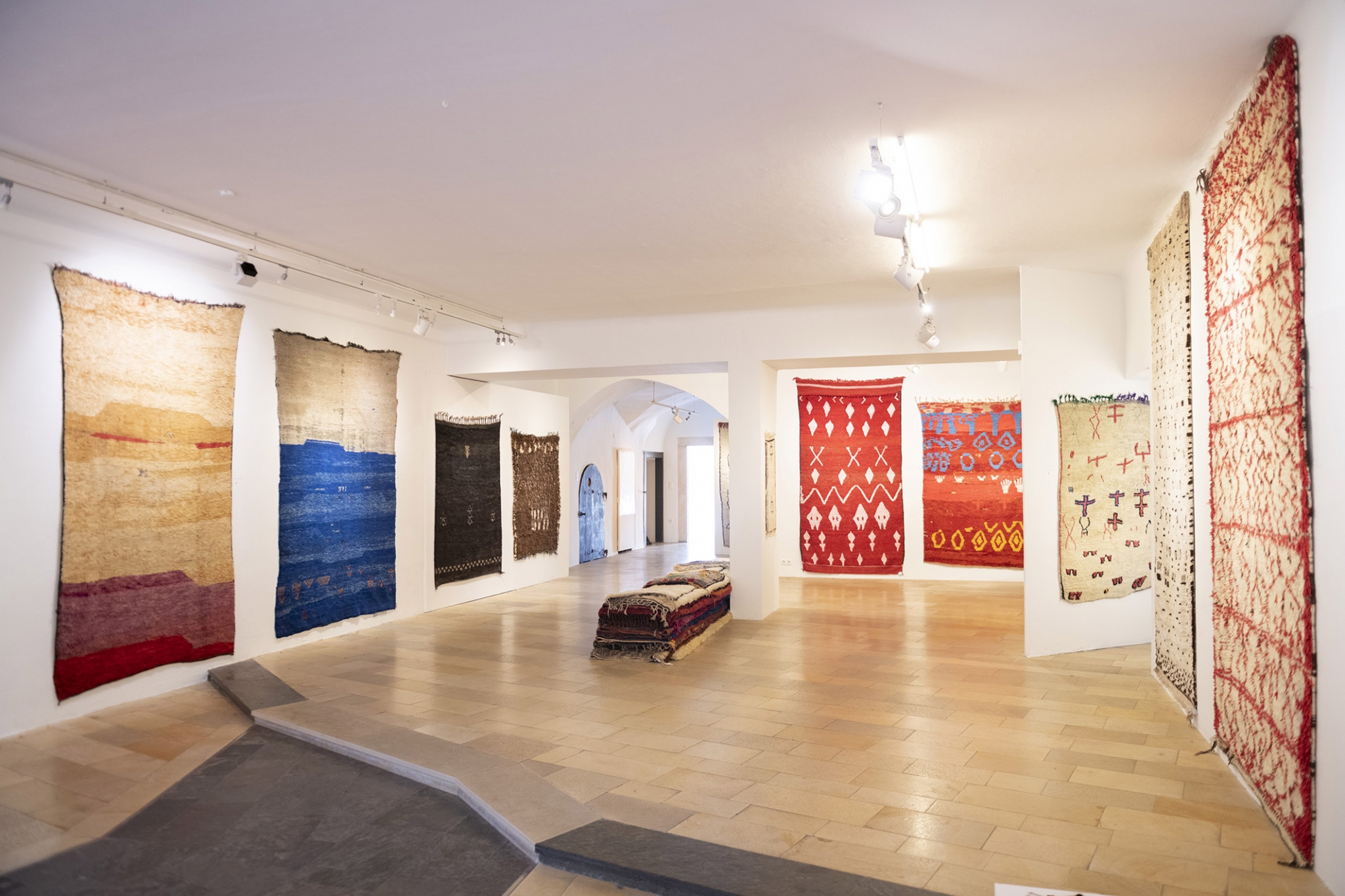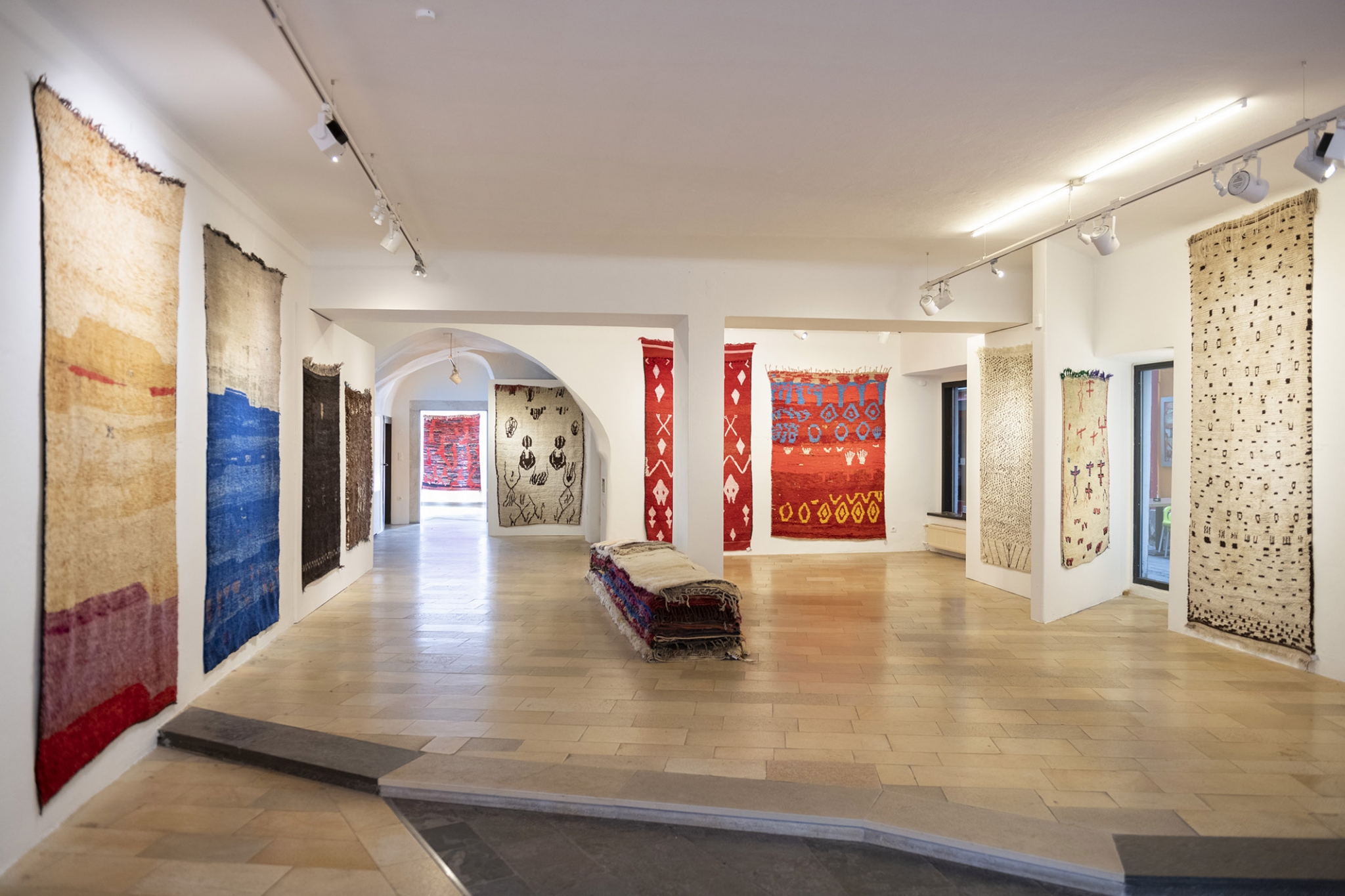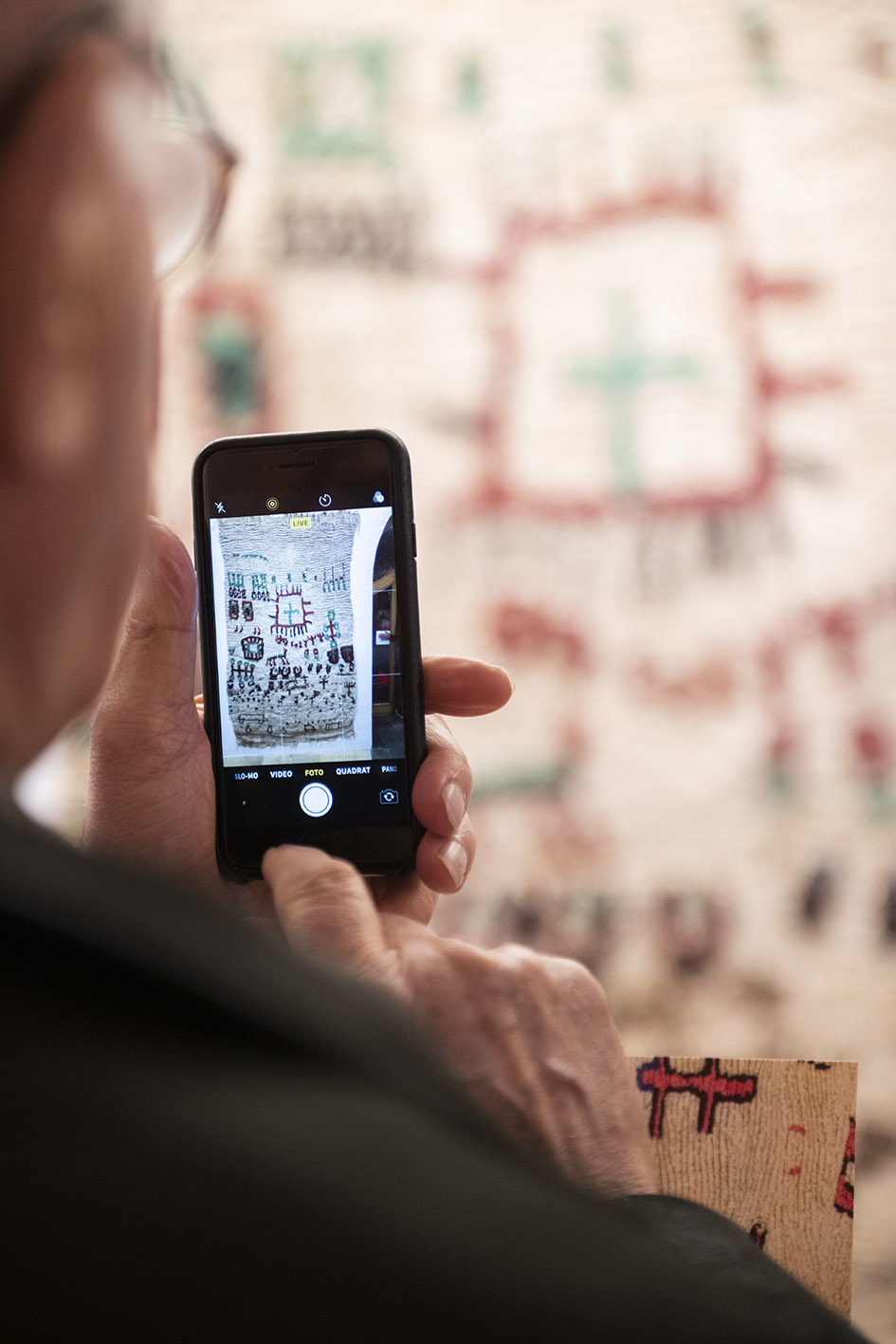OPENING November 21st 2019
7 PM Gallery Reinisch
INTRODUCTION Günther Holler-Schuster
Exhibition until 20th Dezember 2019
This time around, Galerie Reinisch Contemporary is exhibiting carpets from Morocco whose design vocabulary appears highly archaic. The creative impulse which manifests itself differently in the functional and in the spiritual dates back to mankind’s earliest days. Signs and symbols infused with puzzling content can be found in cave drawings and on rock carvings, on household objects, weapons as well as on textiles.
There is no doubt that carpets are multifunctional products. In addition to their residential and decorative function as well as their spiritual significance, they are condensations of worldviews and faiths. Dependent on the varying fortunes of the weather and of good hunting, mainly nomadic societies were looking for a way to propitiate the circumstances in which they found themselves. Their continued existence and that of the entire clan depended on this. The work of peasants and craftsmen (weavers) was regarded in these cultures as “creation” that was based on the cosmic model. To a certain extent, the “Great Creation” was reflected at the human level. Like field cropping, weaving and tying follow a seasonal rhythm – the loom was set up in autumn, which marked the start of tillage. In winter, when plants grew below the soil, the fabric on the loom also “grew”. Removal of the fabric from the loom then occurred at the same time as the harvest in the fields. It is therefore clear that the connection between the earthly and the heavenly was the central effort in such spiritually permeated societies.
About 35,000 years before our era, carved symbols or successions of notches emerged in bones. On rocks, in caves and on objects we find spirals, rhombuses, straight lines and arrangements of dots. Even from the Eastern Alps (Val Camonica), such finds can be over 12,000 years old, while the sensational finds from the Anatolian Catalhöyük are about 10,000 years old. The graphisms (symbols between writing and pictures) which have been found extend to representational images of figures, animals or objects and had complex meanings that often can no longer be fully explained today. They could be hunting symbols, aids for incantation rituals, or part of sacred or magic rites. They always represent a connection between the real world of human life and a religious, cosmic superstructure. The real environment and world of objects are reflected in the symbols and patterns precisely as were the measures taken to propitiate higher powers. The design vocabulary is never clear. Intermixtures and combinations of signs and symbols can always be detected due to processes that sometimes lasted for millennia. Religions such as Islam and Christianity are not the only sources of spiritual potentials. Most of the earlier pagan concepts have been preserved. Although they have lost their meanings today, they are integrated into the respective cultures as an integral part of collective communication. Hence the motif of the hand as a defensive symbol can already be found in cave paintings dating back to the earlier Stone Age but also attained pivotal significance in the religious symbolism of the Mediterranean. As the “Hand of Fatima”, the daughter of the Prophet, it is present in all the Islamic regions. In Morocco, it was painted with defensive and protective connotations on the walls and doors of the houses – Jews called them the “Hand of God” while eastern Christians referred to them as the “Hand of Mary”. The symbol of the hand, which brings happiness and blessings, is transformed into a five-pointed star in the Moroccan national flag and connects the hand with the linear symbol of the rhombus, which in turn can mean fertility and femininity as well as the mystical number five – four corner points and the imaginary centre. Above the centre, the axis that connects the earthly with the heavenly rises in a vertical direction.
Weaving is a spiritual act in the moment, while fabric on the other hand is basically an expression of the earthly. Its lines are literally laid along the horizontal axis. The vertical emerges in the religious-spiritual or imaginary context. Hence the object (carpet) receives essential aspects of its reality at the meta level.
What seems archaic and alien and therefore exotic and attractive to us today is part of a communication with the supernatural that has undergone transformation through the millennia – it is the protocol of the effort made to propitiate the divine, as it were.
Günther Holler-Schuster
